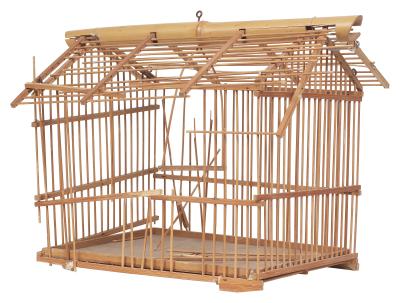
Protecting and storing livestock is a very critical issue for several entrepreneurs. For one, animals are the backbone of their work - the loss of one animal presents a major financial disadvantage. For another, the health of the animals depends severely on the living conditions that they have. For instance, chickens are (and possess) resources that vastly beneficial to many livestock owners.
Quality chicken eggs alone can yield generous amounts of payoff for the patient business farmer, while the farm hobbyist will be pleased to see his chickens in a happy and healthy condition. As such, it is essential that an owner come up with a reasonable shelter for his or her chickens. A chicken house is the logical choice for such a shelter - made from materials such as wood and wire, one can create a chicken coop design that can provide convenient chicken care. One of the most important things to consider during the design of the coop is to determine what type of coop to build. Coops can be built in different designs, each of which has their own advantages and disadvantages. One popular coop for novice chicken keepers is the tractor coop, a coop that is less costly to create and is easy enough to maintain until an owner is ready to move to advanced methods of chicken keeping.
Others, such as the urban tractor coop, may provide more space and allow an owner to exert less effort in gathering eggs, but may take more space than the basic tractor coop. Another thing to consider is the number of chickens that a farmer owns. Although a tractor coop may appear to be cost-efficient in terms of the number of resources needed to build it, it may come up short when faced with the prospect of housing eight to ten chickens. Likewise, an excessively large coop design may prove to be a waste of materials for a farmer who is only beginning a chicken-keeping career with two birds.
One must consider not just the number of chickens one possesses, but also their capacity to be cooped up together, the size of each individual chicken, and the amount of area required for them to roam freely. Lastly, one should consider the feasibility of the project - namely, the difficulty of creating the chicken coop design.
Some beginner farm hobbyists might find it hard to follow instructions on building, say, an all-in-one chicken coop, which could cost them valuable amounts of wood, nails, wire, and other resources that could have been spent on creating an easier coop. When checking feasibility, one must ask the question, "Am I capable enough to complete this design?" The wise farmer must always remember that part of the reason for following a chicken coop design is to make their birds comfortable. A good chicken coop design should benefit not just the farmer or the hobbyist's sense of business, but the chickens as well.
 The Delaware Chicken
Poultry BreedsDelaware Chick
The Delaware Chicken
Poultry BreedsDelaware Chick
 Important Reasons Why Sail Insurance Is So Important
Really of us must take out vacationing insurance when step
Important Reasons Why Sail Insurance Is So Important
Really of us must take out vacationing insurance when step
 Great Birds of Prey in Australia
The best thing I have ever d
Great Birds of Prey in Australia
The best thing I have ever d
 Perfect Travel Destinations With Travellers Aged In Excess Of 80
Person stage is a persons age when oldies have all their t
Perfect Travel Destinations With Travellers Aged In Excess Of 80
Person stage is a persons age when oldies have all their t
 Easy to Make Bird Trap for Small Birds
Easy to Make Bird Trap for Small Birds
Easy to Make Bird Trap for Small Birds
Easy to Make Bird Trap for Small Birds
Copyright © 2005-2016 Pet Information All Rights Reserved
Contact us: www162date@outlook.com